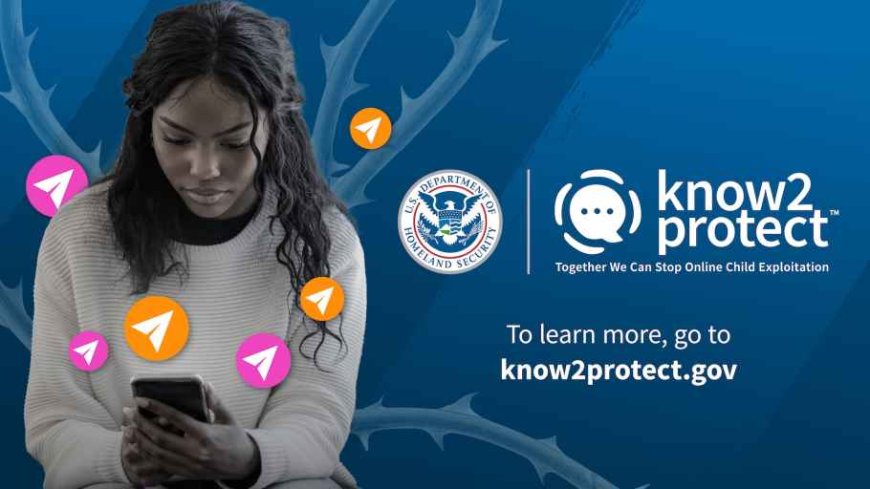A First-of-its-kind Campaign to Combat Online Child Sexual Exploitation and Abuse
A First-of-its-kind Campaign to Combat Online Child Sexual Exploitation and Abuse Privacy and Safety Hub

The Importance of Addressing Child Sexual Exploitation and Abuse

The sexual exploitation and abuse of children is illegal, vile, and, as a topic of polite conversation, largely taboo. But, these horrific crimes can’t be ignored. They need to be discussed in the halls of government, at boardroom tables, and at kitchen tables. Young people need to be attuned to online sexual risks, and adults need to understand the issues so they can assist young people in crisis. That’s why Snap is honored to be a founding supporter of “Know2Protect,” a first-of-its-kind public awareness campaign launched today by the U.S. Department of Homeland Security (DHS).
Know2Protect Campaign: Addressing Sexual Harms Impacting Children and Teens
From the production and distribution of contraband imagery to the grooming of children for sexual purposes and financially motivated “sextortion,” Know2Protect will shine a light on a range of sexual harms impacting children and teens. The campaign will educate and empower young people, parents, trusted adults, and policymakers to help prevent and combat these crimes.
Snap was an early collaborator with DHS and agrees there is a need for a singular, galvanizing message to reach this range of audiences across the country and around the world. In support, we’ve donated advertising space for Know2Protect to post educational material on Snapchat, helping to reach teens where they are, and we’ll feature the campaign on our platform and on our Privacy and Safety Hub.
In addition, we’re conducting new research with teens (aged 13-17) and young adults (aged 18-24) in the U.S. about the various dimensions of child sexual exploitation and abuse (CSEA) online, which will help to further inform the campaign and our own efforts to keep fighting this appalling abuse across platforms and services.
Research Results: Understanding Online Sexual Crimes Against Minors
Research results
From March 28, 2024, until April 1, 2024, we polled 1,037 U.S.-based teens and young adults, asking about their exposure to and knowledge of various online sexual crimes against minors. Participants responded, referencing their experiences on a range of online platforms and services, not just Snapchat. Some initial key findings include:
-
Sexual-related online risks are endemic for many teens and young adults, with more than two-thirds (68%) reporting that they had shared intimate imagery online or experienced “grooming”1 or “catfishing”2 behaviors.
-
Fake personas are pervasive online and are a major driver of digital risk exposure. Among those who shared intimate imagery, or experienced grooming or catfishing behaviors, nine in 10 (90%) said the other person lied about their identity.
-
Sharing intimate imagery and catfishing are high-risk gateways to online “sextortion,”3 as nearly half of those who shared intimate imagery were threatened with sextortion. Males were more susceptible to being sextorted than females (51% vs. 42%), and financial sextortion – demanding money, gift cards, or something else of value from the target – was more common among males (34% vs. 9%). In such scenarios, females were more often asked for additional sexual imagery (57% vs. 37%).
-
Unfortunately, although probably not surprisingly, a noteworthy percentage of teens and young adults (41%) who experienced one of these three risks kept it to themselves. Just 37% reported grooming to the online platform, law enforcement, and / or a hotline. Intimate imagery was the only risk where a healthy – but still insufficient – percentage of those targeted (63%) reported the problem; more than half (56%) said they reported financial sextortion that occurred via catfishing.
These latest findings underscore Snap’s ongoing study of digital well-being, which last year included a deeper dive into online sextortion among teens and young adults.
We plan to repeat the study later this year to help gauge the impact of the Know2Protect campaign on teens and young adults across the country.
Snap’s Commitment to Combat Online Sexual Abuse
Snap’s work to combat online sexual abuse
SDGs, Targets, and Indicators
| SDGs | Targets | Indicators |
|---|---|---|
| SDG 16: Peace, Justice, and Strong Institutions | Target 16.2: End abuse, exploitation, trafficking, and all forms of violence against and torture of children | Indicator not mentioned in the article |
| SDG 5: Gender Equality | Target 5.2: Eliminate all forms of violence against all women and girls in the public and private spheres, including trafficking and sexual and other types of exploitation | Indicator not mentioned in the article |
| SDG 10: Reduced Inequalities | Target 10.2: By 2030, empower and promote the social, economic, and political inclusion of all, irrespective of age, sex, disability, race, ethnicity, origin, religion, or economic or other status | Indicator not mentioned in the article |
| SDG 4: Quality Education | Target 4.7: By 2030, ensure that all learners acquire the knowledge and skills needed to promote sustainable development, including through education for sustainable development and sustainable lifestyles, human rights, gender equality, promotion of a culture of peace and non-violence, global citizenship, and appreciation of cultural diversity and of culture’s contribution to sustainable development | Indicator not mentioned in the article |
Behold! This splendid article springs forth from the wellspring of knowledge, shaped by a wondrous proprietary AI technology that delved into a vast ocean of data, illuminating the path towards the Sustainable Development Goals. Remember that all rights are reserved by SDG Investors LLC, empowering us to champion progress together.
Source: values.snap.com

Join us, as fellow seekers of change, on a transformative journey at https://sdgtalks.ai/welcome, where you can become a member and actively contribute to shaping a brighter future.







